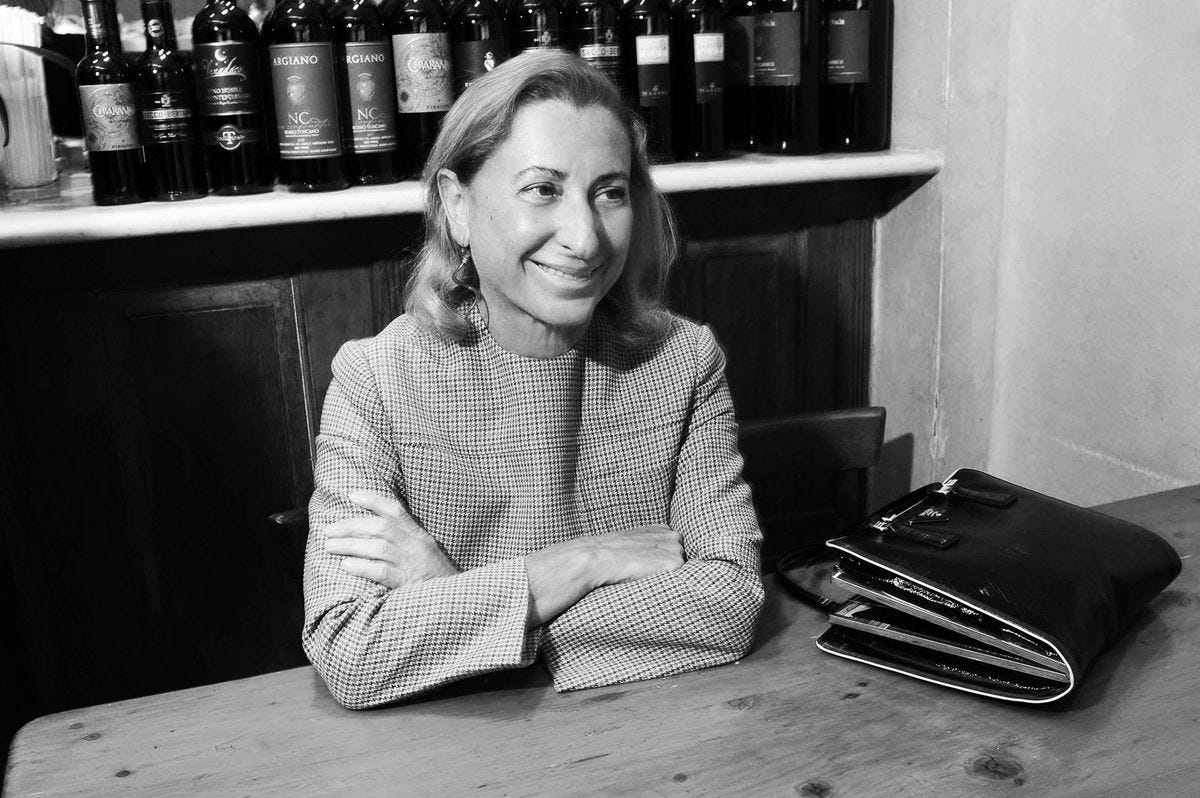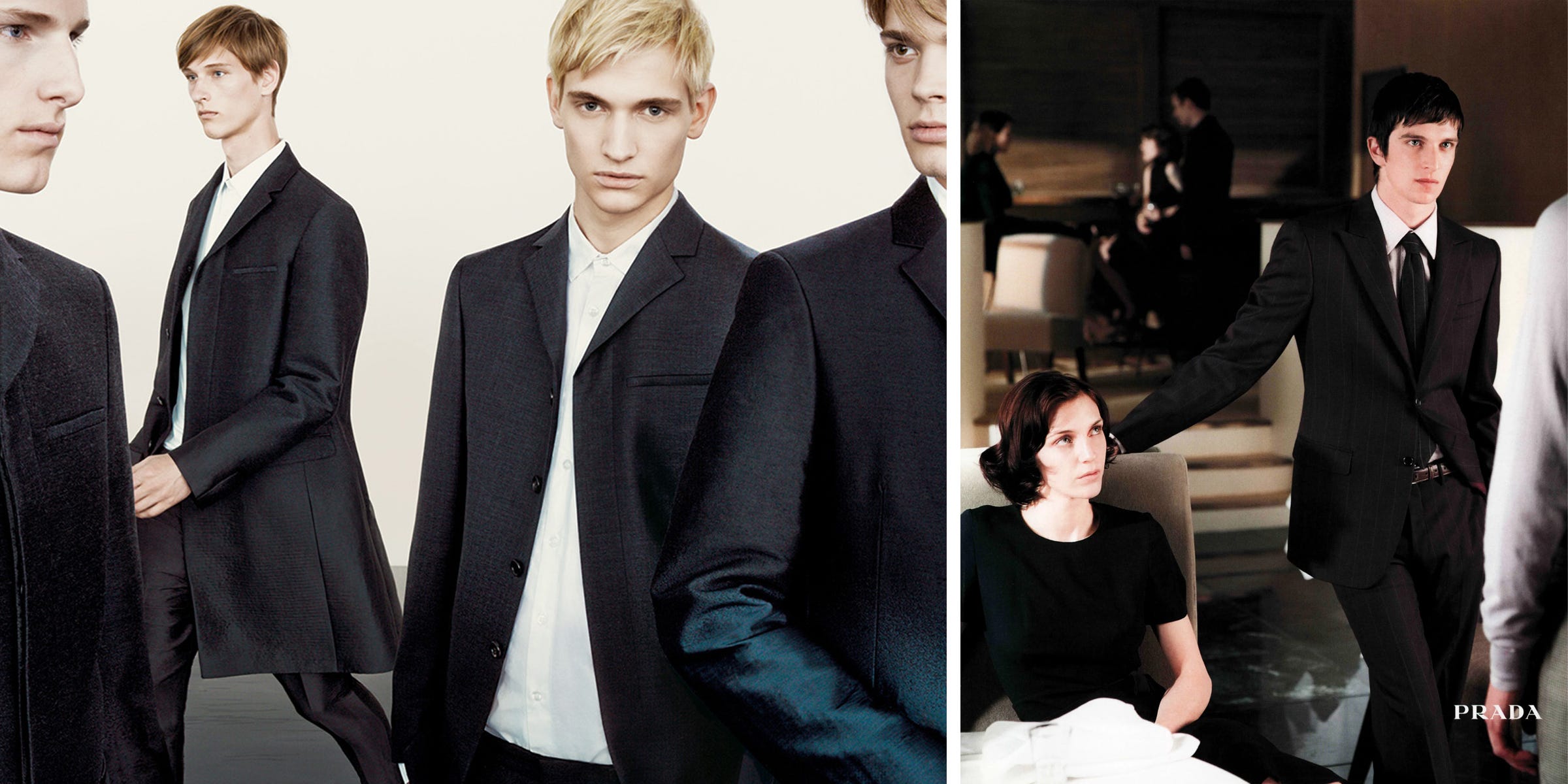The Flâneur Wears Prada
Miuccia, Menswear, and the Silhouette of the Intellectual Gentleman
Charvet was worn by Charles Baudelaire, Attolini by Jep Gambardella, and Brioni by Marcello Rubini. Whether the first modernist poet or the journalist of a decadent Eternal City, both wanderers of modern life and its glittering metropolis observed, critiqued, and experienced it all. One thing they never dismissed was the way they presented themselves. Because you must admit, strolling along La Seine in a double-cuff shirt or wandering down Via Veneto in a black wool-silk suit is a romance in motion.
Walter Benjamin, the German thinker of the 20th century, once wrote, “The flâneur is the essential figure of the modern urban spectator, an amateur detective and investigator of the city.”
I would argue that the flâneur is a byproduct of modernism itself, born of the nonconformist mind — an individual attuned to awareness, curiosity, and a quiet rebelliousness, yet without the desire for destruction. All of which can be gathered under the name intellectual.

The truth seeker stands at the core of what it means to be an intellectual. The title has nothing to do with degrees, honors, or the number of books one has read. Its virtue lies in honesty, autonomy, and understanding: to see the world, to stand at its center, yet remain detached from it.
It is this very posture that gave Baudelaire his place as the first modernist of humanity and lent Jep Gambardella, in La Grande Bellezza (2013), the tragic charm of a man reigning over the ruins of modern Rome. Both sought truth over comfort, understanding over conformity, freedom of mind over tribal allegiance.
Though often expressed in literature or cinema, the ideal of the autonomous truth seeker—what might be called philosophy in the name of the flâneur—finds one of its most fascinating expressions in fashion.
In the 1970s, the prestigious Milanese leather house Prada underwent a transformation that forever changed its path. Miuccia Prada, granddaughter of Mario Prada, the conservative founder who once declared that “no woman should run a company” (and thankfully, his son had no interest in doing so), took over and began to treat the brand as a canvas for her intellectual imagination.
Armed with a Ph.D. in political science, a past in the Italian Communist Party, and years of mime training at Milan’s Piccolo Teatro, Signora Prada embodied everything that seemed alien to the fashion establishment. Yet those very contradictions became the foundation of Prada’s modern empire.
Like the intellectual pursuit itself—the search for truth regardless of convention—Miuccia approached every creation as a statement of principle. The 1984 nylon luxury bag, the women’s collections that merged uniform discipline with couture finesse, or deconstructed couture into minimalist, utilitarian elegance, all testified to her restless inquiry. The same philosophy shaped the menswear line that debuted in 1995.
Keep reading with a 7-day free trial
Subscribe to Renaissance Flâneur to keep reading this post and get 7 days of free access to the full post archives.




